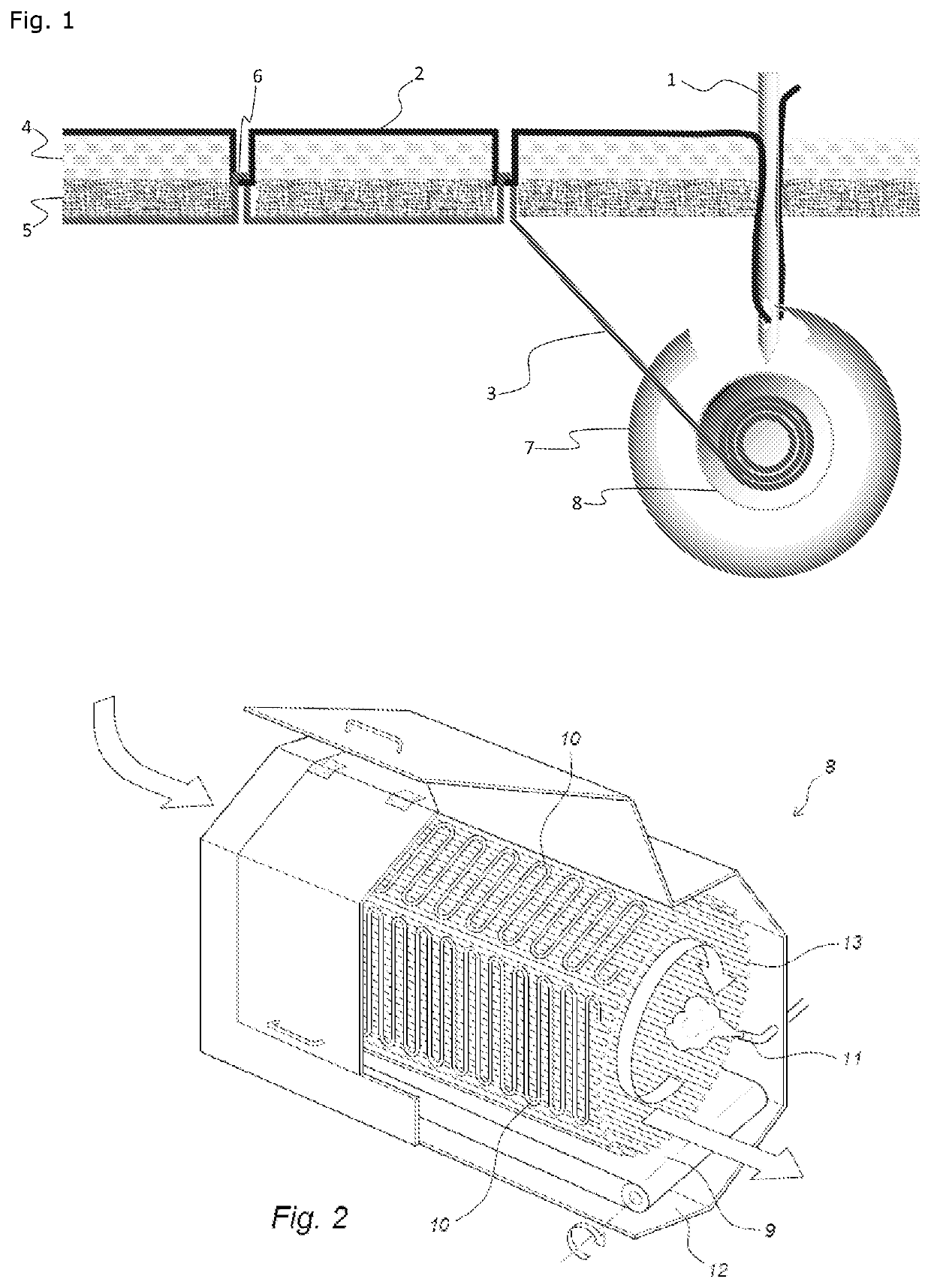Textile article and method for the production and disassembly of a textile article
a textile article and textile technology, applied in the field of textile article and textile article production and disassembly, can solve the problems of reducing the quality and economic value of recycled materials, difficult to recycle into usable products at the end of their useful or expected life, and reducing the quality of recycled materials. the effect of reducing the mountain of waste, reducing energy and water consumption, and high purity
- Summary
- Abstract
- Description
- Claims
- Application Information
AI Technical Summary
Benefits of technology
Problems solved by technology
Method used
Image
Examples
example 1
[0096]Table 1 shows melt yarn according to an embodiment of the present invention and that can be used for the production of textile articles that can be disassembled such as clothing but also mattresses, etc. Disassembling takes place by heating the article or the stitches that are made of melt yarn to a temperature that is approximately, equal to or higher than the melting temperature of the yarn.
MeltingElasticityTensileElongation atPolymertemperaturemodulusstrengthbreaking pointPolypropylene170°C.1.58GPa39.5MPa232%Polyamide 11190°C.1.33GPa55MPa320%PLA175°C.3.6GPa47MPa 6%Polyester (PET-67°C.2.11GPa35MPa350%G, glyceroladded)
[0097]Other examples or useful yarns are
[0098]A polypropylene yarn with disassembling temperature of 176° C. and higher, a tensile strength of 20 N or 39.5 cN / Tex, 520 Dtex / 3. This polyolefine-based yarn can be used for chemical recycling processes and can be used for stitching clothing, accessories and furniture textile. This yarn can moreover be provided in di...
example 2
[0102]Disassembly will preferably take place by means of a device providing the correct disassembling temperature. Depending on the kind of article to disassemble as well as the amount, one can choose for a specific device.
[0103]Hereby, both direct and indirect heating can be applied. Table 2 describes possible processes that can be applied, depending on the nature of the article and the scale size:
Small number thatLarge number thatneeds processingneeds processingSmall textile articleHeat gun (with orContinuous tumbler oven(e.g. hand bags,without steam)accessories, clothing,iron (steam / footwear, etc.)convection oven)Large textile articleHeat gun (with orContinuous oven(e.g. mattresses,without steam)furniture, car seats,etc.)
example 3
[0104]The polymer melt yarn can be supplemented with heat-conductive additives or materials. Examples of such melt yarn are:
[0105]A polypropylene homopolymer yarn with 10% of calcium carbonate filler inside. Melting point of the yarn is 176° C., available in different dtex.
[0106]A polypropylene homopolymer yarn with 5% of mic filler inside. Melting point of the yarn is 165° C., available in different dtex.
PUM
| Property | Measurement | Unit |
|---|---|---|
| melting temperature | aaaaa | aaaaa |
| melting temperature | aaaaa | aaaaa |
| length | aaaaa | aaaaa |
Abstract
Description
Claims
Application Information
 Login to View More
Login to View More - R&D
- Intellectual Property
- Life Sciences
- Materials
- Tech Scout
- Unparalleled Data Quality
- Higher Quality Content
- 60% Fewer Hallucinations
Browse by: Latest US Patents, China's latest patents, Technical Efficacy Thesaurus, Application Domain, Technology Topic, Popular Technical Reports.
© 2025 PatSnap. All rights reserved.Legal|Privacy policy|Modern Slavery Act Transparency Statement|Sitemap|About US| Contact US: help@patsnap.com

